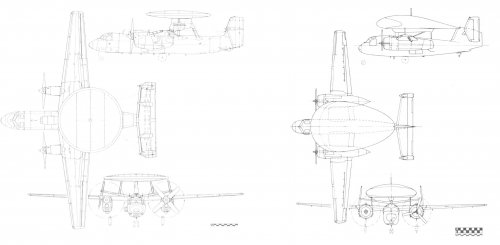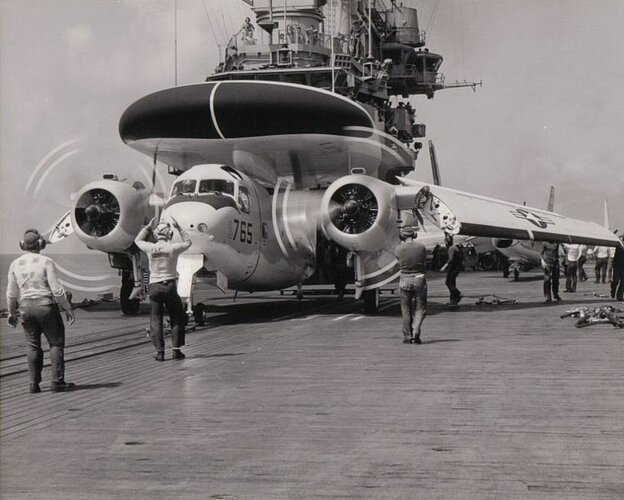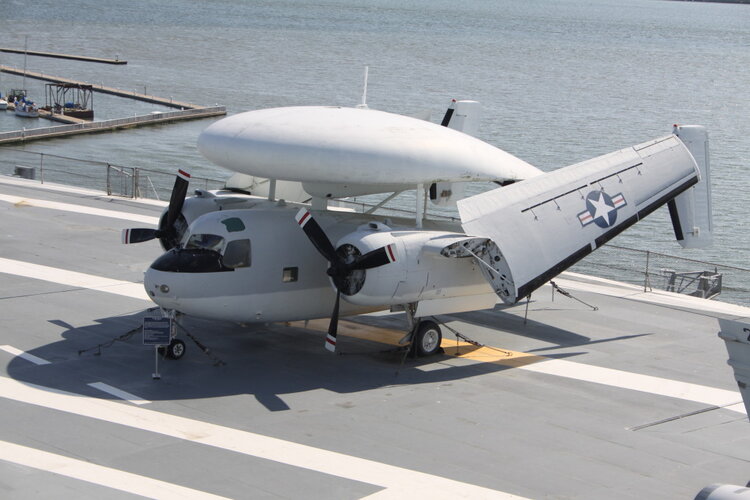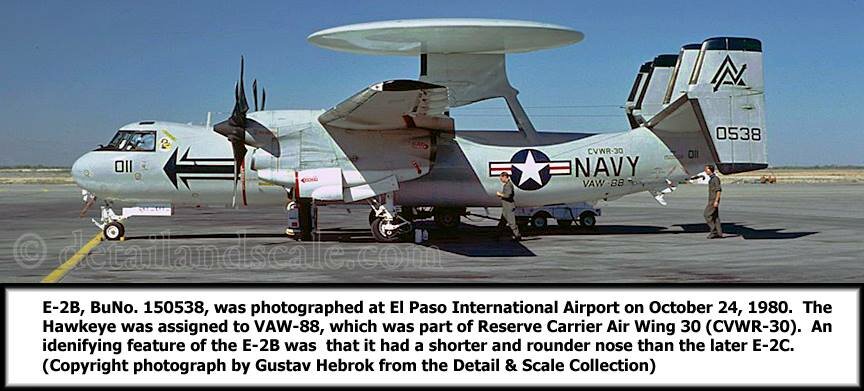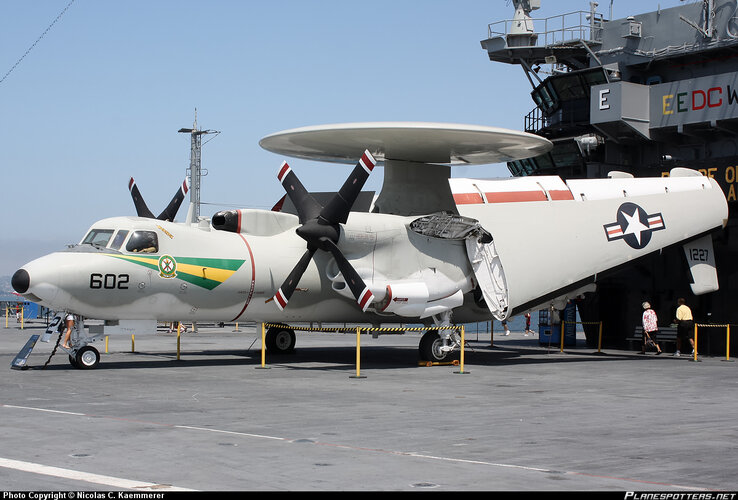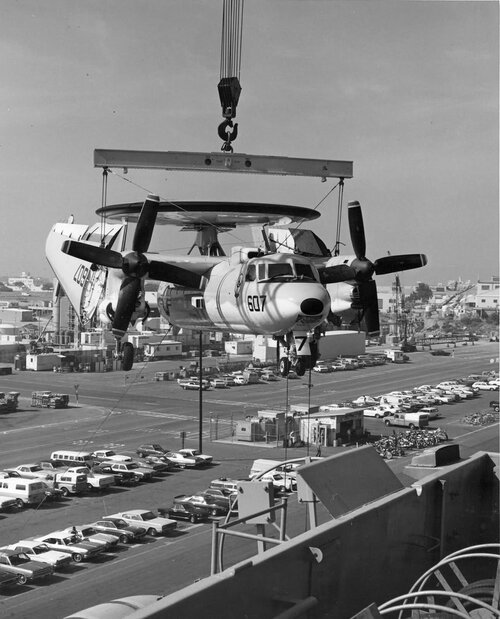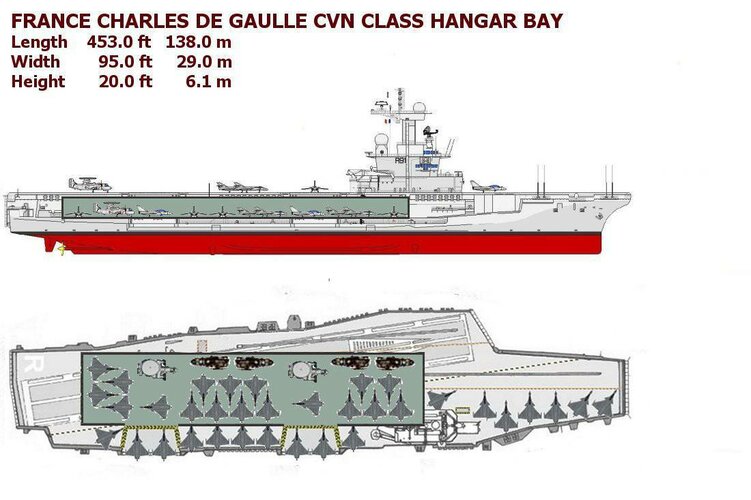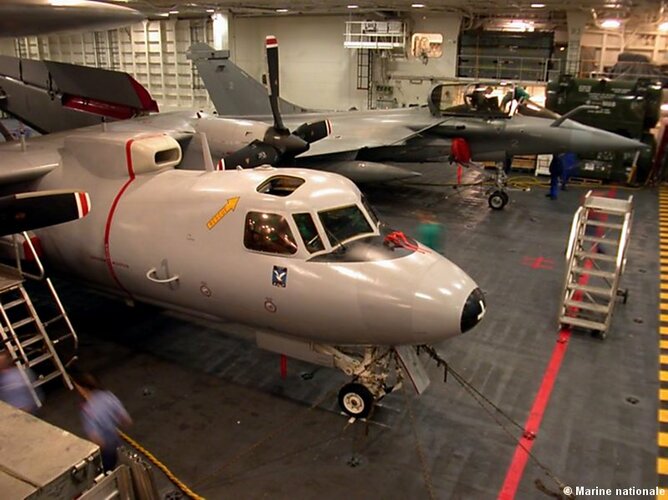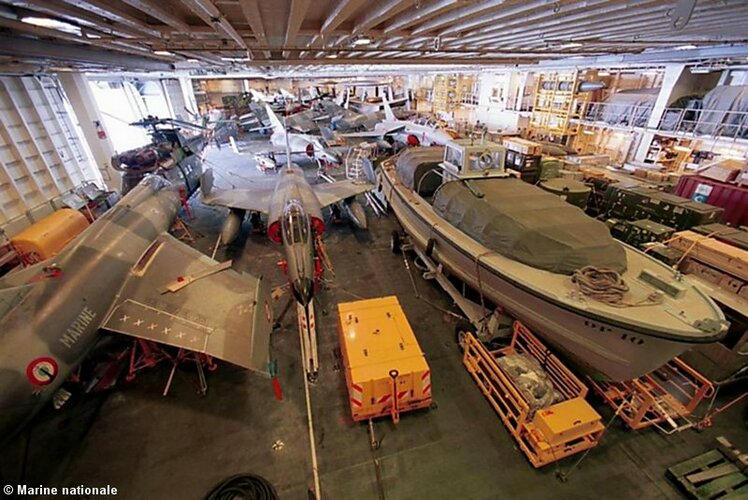- Joined
- 21 May 2006
- Messages
- 2,704
- Reaction score
- 1,604
With the ever advancing speed of electronic technology, predominantly spurred on by military application, came the ever steady miniaturisation of electronics.
My question/topic to the forum pertains to whether the likes of the electronics/systems (APS-125 radar and associated electronics, computers systems) of the USN ‘OS-139’ Carrier-based AEW aircraft program, which lead to the Grumman YW2F-1 (E-2A Hawkeye), could have been incorporated 'into/on to' a modified Grumman E-1B Tracer variant, to create a smaller and cheaper E-1/E-2 hybrid AEW platform, to serve foreign/allied navies who operated smaller carriers than the US Navy, or aboard smaller US Navy carriers, which couldn’t operate the larger, heavier and more expensive Grumman E-2 Hawkeye? Or for that matter the hybrid Tracer could potentially give smaller air forces a cost achievable AEW platform?
Naturally, the Tracer’s radial engines would be replaced by ‘a then’ appropriate turboprop engine (pre-S-2T TurboTracker arrangement). This would not just give additional power for a lesser weight, it would undoubtedly give the hybrid a much improved high-altitude performance, which is critical to an AEW platform, as well as power for onboard electronics.
The following considerations/questions are what comes to mind:
- Being conscious of the inherent difficulties of inadequate cooling in the closely packed avionics compartment, by potentially utilising the operational gained experience of the ironed-out bugs E-2B Hawkeye variant - which replaced the unreliable rotary drum computer with the digital Litton L-304 computer system’
- Refurbishing retired USN Grumman E-1B, to serve as new hybrid AEW platform;
or
- Using existing surplus Grumman C-1 Trader’s fuselage’s (of which 87 samples were built), and incorporating an 18-nch (or more if required and feasible) stretch of the E-1B Tracer configuration, to serve as new hybrid AEW platform
- Would the APS-125 radar dish be too large for the E-1 hybrid? If so would it be feasible to cut-down the diameter of the ????? antenna arrangement, so as to make it more feasible? (understanding and excepting, by doing so it would undoubtedly effect the ?????’s performance!). Either way, the large and draggy the radome arrangement of the original Hazeltine AN/APS-82 radar would need to be replaced with a more aerodynamic arrangement!
- Specifically, aware of internal fuselage space and room and functionality of ‘Radar/Intercept Controllers’ (The original E-1B Tracer having two Radar/Intercept Controllers, and the E-2 Hawkeye having four Radar/Intercept Controllers, would it be feasible, as in the case of the Lockheed P-3 Orion/Lockheed S-3 Viking to operate the APS-125 radar with two Radar/Intercept Controllers?
P.S. Does anyone have a comparison drawing of the E-1 Tracer and the E-2 Hawkeye, so as to physically see differences of the two in size?
I look forward to your feedback and input!
Regards
Pioneer
My question/topic to the forum pertains to whether the likes of the electronics/systems (APS-125 radar and associated electronics, computers systems) of the USN ‘OS-139’ Carrier-based AEW aircraft program, which lead to the Grumman YW2F-1 (E-2A Hawkeye), could have been incorporated 'into/on to' a modified Grumman E-1B Tracer variant, to create a smaller and cheaper E-1/E-2 hybrid AEW platform, to serve foreign/allied navies who operated smaller carriers than the US Navy, or aboard smaller US Navy carriers, which couldn’t operate the larger, heavier and more expensive Grumman E-2 Hawkeye? Or for that matter the hybrid Tracer could potentially give smaller air forces a cost achievable AEW platform?
Naturally, the Tracer’s radial engines would be replaced by ‘a then’ appropriate turboprop engine (pre-S-2T TurboTracker arrangement). This would not just give additional power for a lesser weight, it would undoubtedly give the hybrid a much improved high-altitude performance, which is critical to an AEW platform, as well as power for onboard electronics.
The following considerations/questions are what comes to mind:
- Being conscious of the inherent difficulties of inadequate cooling in the closely packed avionics compartment, by potentially utilising the operational gained experience of the ironed-out bugs E-2B Hawkeye variant - which replaced the unreliable rotary drum computer with the digital Litton L-304 computer system’
- Refurbishing retired USN Grumman E-1B, to serve as new hybrid AEW platform;
or
- Using existing surplus Grumman C-1 Trader’s fuselage’s (of which 87 samples were built), and incorporating an 18-nch (or more if required and feasible) stretch of the E-1B Tracer configuration, to serve as new hybrid AEW platform
- Would the APS-125 radar dish be too large for the E-1 hybrid? If so would it be feasible to cut-down the diameter of the ????? antenna arrangement, so as to make it more feasible? (understanding and excepting, by doing so it would undoubtedly effect the ?????’s performance!). Either way, the large and draggy the radome arrangement of the original Hazeltine AN/APS-82 radar would need to be replaced with a more aerodynamic arrangement!
- Specifically, aware of internal fuselage space and room and functionality of ‘Radar/Intercept Controllers’ (The original E-1B Tracer having two Radar/Intercept Controllers, and the E-2 Hawkeye having four Radar/Intercept Controllers, would it be feasible, as in the case of the Lockheed P-3 Orion/Lockheed S-3 Viking to operate the APS-125 radar with two Radar/Intercept Controllers?
P.S. Does anyone have a comparison drawing of the E-1 Tracer and the E-2 Hawkeye, so as to physically see differences of the two in size?
I look forward to your feedback and input!
Regards
Pioneer

